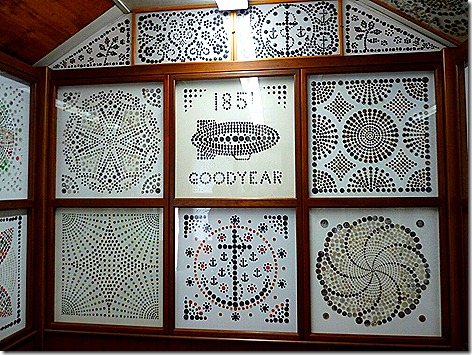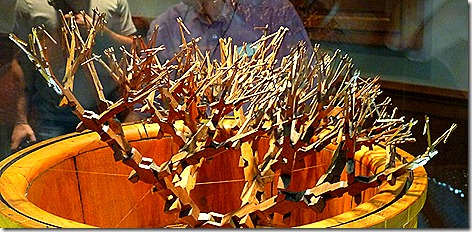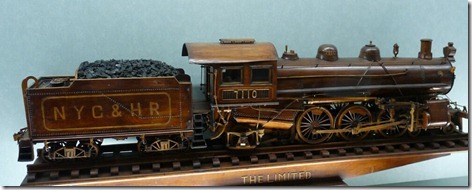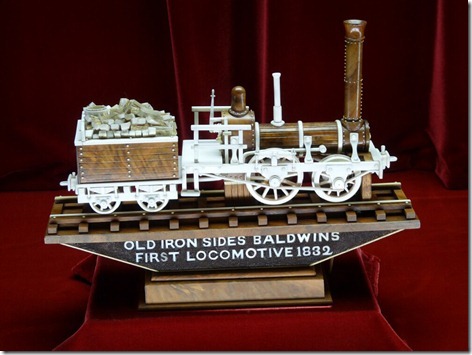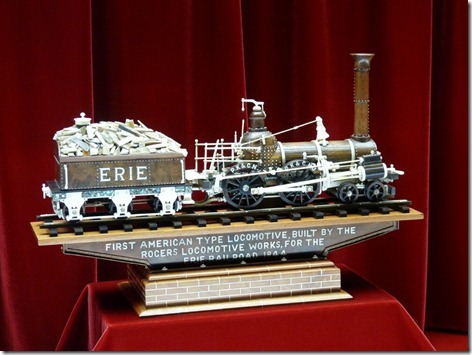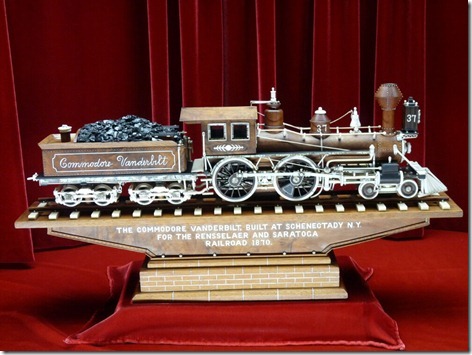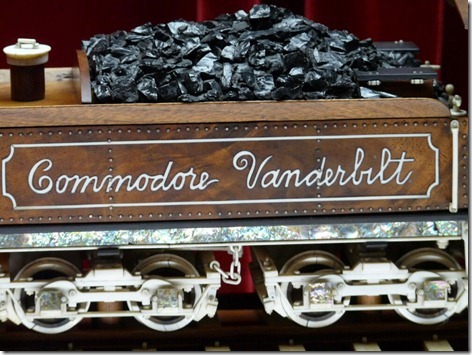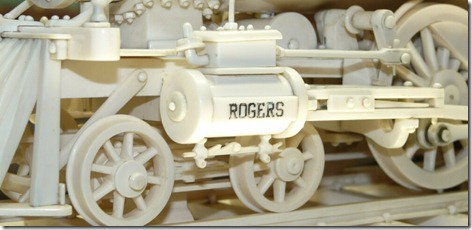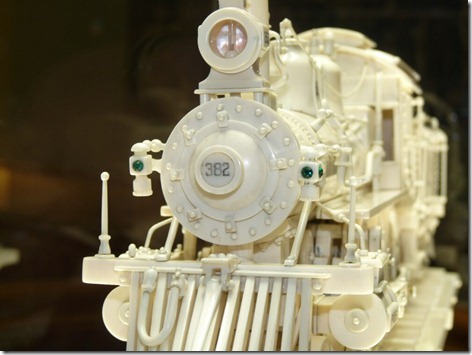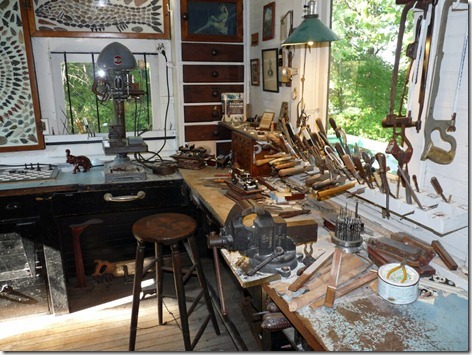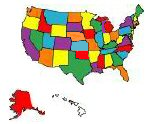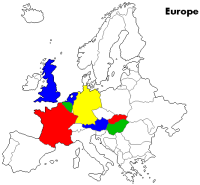Daily Archives: October 7, 2011
Warther’s Locomotives . . .
Today the first thing on our agenda was to visit The Warther Museum in Dover, OH, famous for the locomotive carvings of Ernest ‘Mooney” Warther.
Getting to the museum, we had a little while to wait for the next tour, so we were directed to a couple of buildings next door.
The first one held part of Ernest’s wife, Frieda’s button collection. On display are over 73,000 buttons of her 100,000 plus collection, some dating from the 1850’s. They are all arranged in patterns of all shapes and sizes.
Right next door was the home where Ernest and his wife lived for 63 years. Built in 1912, it was the only home they ever lived in.
Finally our tour started and we were led into the first room. This first display case show all of the thousands of little tiny carvings,
as illustrated in this close-up, that when put together,
dASDAS
end up looking like this.
ADFDSF
And maybe the most astounding feat of carving is this.
For years Warther had been carving small wooden pliers from one solid piece of wood. With ten quick cuts, and no sanding, he had a operation pair of pliers. His record time for making one is a little over 9 seconds, start to finish.
He said one day he suddenly saw in his mind how he could make a very large, interlocking set of pliers. He had already done smaller interlocking sets, starting with the blank at the bottom of this photo and ending up with what you see below. Each one of those limbs is a tiny working set of pliers.
He told his friends that he would have 511 pliers on this one, that it would take exactly 31,000 cuts, and it would take him 64 days. And using a solid wood blank like the one below, he did it.
He ended up with what is know as the ‘Pliers Tree’ below. Each limb is an operating set of pliers. And several times before skeptical groups of scientists, engineers, and reporters, he showed that it all folded right back into the original shape.
ASDFDSF
Next up we saw the first train he ever carved. Done in walnut, even the wheels turn.
AFDSDSF
His next train was carved from ebony wood and ivory. In fact all of the white parts of the locomotives are carved from ivory.
When he didn’t use ebony, his wood of choice was always walnut, due to its strength and smooth carving.
adfadfaad
This engine, the Commodore Vanderbilt, is notable because of the ivory words on the coal tender.
Each word is carved from a solid piece of ivory and inlaid into the walnut. Ivory cannot be bent or shaped without breaking, so this was carved as a single piece.
Warther also carved entire locomotives from ivory.
The detail on these is just fantastic.
asdfasdfa
This wall hanging was carved from a single piece of wood, starting at the top and working down.
adfsds
And even more amazing he did it all in this simple shop with hand tools and carving knives of his own design.
If you’re ever in this area of Ohio, this place is a must-see. Check it out.
——————————————————————————————————————–
Thought for the Day:
Better to keep your enemy in your sights than in your camp expecting him to guard your back.
adfadsf



